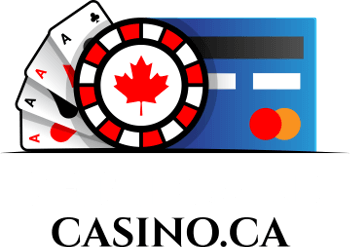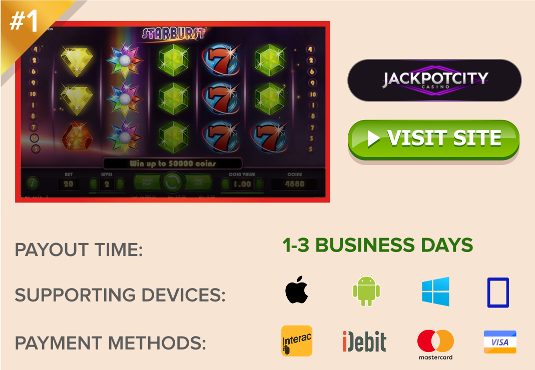How to Earn Money Playing Chess Online
 Chess is the classic board game of mindful mental warfare. For centuries, masters have battled over the board. Today, the same fiercely competitive battle rages on in the digital space as thousands of players take to the internet to compete head to head; not just for pride, nor mental prowess, but for real cold hard cash.
Chess is the classic board game of mindful mental warfare. For centuries, masters have battled over the board. Today, the same fiercely competitive battle rages on in the digital space as thousands of players take to the internet to compete head to head; not just for pride, nor mental prowess, but for real cold hard cash.
How to Play Chess for Real Money Online
-
Know the Rules: The rules of chess are not difficult to comprehend or memorize. There are only six different pieces, each capable of moving in a different way.
-
Improve Your Game: The best way to improve your game from beginner to intermediate level is to practice, practice, practice!
-
Strategy Tips: In-depth strategies are inherently acquired through hours upon hours of situational practice, but these tips will help you pave the path to competitive mastery.
-
Playing for Money: If you think you’ve got what it takes to play competitively, this section will teach you everything from online gaming safety to picking the right events for your skill level.
-
Streaming for Money: Another way to make money playing chess, without risking any cash, is to launch your own chess live stream on an internet broadcasting network like Twitch.
|
Disclaimer – Not all forms of gambling are legal in all provinces of Canada. The legal age to gamble also varies by province. Breaking the law is a serious matter. The information provided on this website is meant for educational purposes only, and we will not be held liable for any irresponsible / illegal activity on your part. Know the gambling laws in your province and follow them. The following pages provide more information on Canadian gambling laws:
|
1. Learn How to Play Chess |
|
Chess is a game for exactly two players. Traditionally, both would be human players, but computer technology has given us the option to compete against ‘bots’ (computer robots). We’ll talk more about the advantages of AI bot play in our next section on game improvement. Setting Up the Chess BoardA chess board is made up of an 8×8 grid; 64 squares alternating in color from dark to light. There are 32 game pieces you’ll need to place on the board. Half of them – the light colored ones – belong to Player 1. The other half – the dark colored ones – belong to Player 2.
Each player will set up their pieces as follows, left to right, with the “back row” being the line closest to the player, and the “front row” being the line directly in front of the back row (see diagram below). Back Row: Rook – Knight – Bishop – Queen – King – Bishop – Knight – Rook Front Row: Pawn – Pawn – Pawn – Pawn – Pawn – Pawn – Pawn – Pawn
Chess is a turn-based game. Traditionally, the player in control of the light colored pieces is Player 1, and will therefore go first. Player 2, controlling the dark colored pieces, goes second. The two take turns from there on out until one player wins. Which brings us to… Legal Game Piece MovementsEvery game piece – remember there are only six different types – is capable of moving in a different manner. Pawns are the most restrictive, and Queens the most liberal. Legal movements are as follows: Pawn (x8)A pawn can be moved straight forward one or two spaces the first time it moves from it’s original position. After this initial move, a pawn may only move forward one space. However, a pawn cannot attack any opponent’s piece with a forward movement. The pawn may only attack by moving forward diagonally (at a 45-degree angle) one space; forward one and to the left, or forward one and to the right. This angular movement can only be made while attacking an opponent’s piece. Any other time, the pawn is restricted to a singe-space forward movement. This means that, if there is a game piece directly in front of a pawn, that pawn is unable to move (except by attacking diagonally). Rook (x2)The rook can only move in straight lines, forward, backward, left or right. It can move any number of spaces in a straight line, so long as its path is not impeded by any other game piece. The rook may attack any opponent piece by making a legal move and landing on the position of the opponent’s piece. Knight (x2)The knight must move in blocks of three spaces at a time. The spaces must make an “L” shape, meaning he can move two spaces in one direction, then one space in another, or one space in one direction, then two spaces in another. Each movement must be horizontal or vertical, not at an angle. To its benefit, the horse can jump over other game pieces to make this move. Bishop (x2)The bishop moves similar to the rook, except that it can only move diagonally across the board. It cannot move vertically or horizontally. The bishop may move any number of spaces, so long as it is in a straight line (cannot turn to another angle) and is unimpeded (cannot jump ally pieces). King (x1)The king is able to move in any direction, horizontal, vertical, or diagonal, but may only move one space at a time. Queen (x1)The queen is the most valuable of all chess pieces. She is able to move in any direction, and any number of spaces at a time, but only in a straight line (cannot change direction in the same play). Think of it as having the power to move the same as every other game piece except the knight. Special Moves in ChessThere are three special movement rules to be aware of. They include the ability to Promote a Pawn, a Rook/King exchange known as Castling, and the least known among them, En Passant. Pawn PromotionIf you are able to maneuver a pawn all the way to the other end of the game board, that pawn is promoted to any other game piece of your choosing, except a king. You can promote the pawn to a rook, knight, bishop or queen. You may even promote a pawn to queen when you still have a queen on the board (naughty king!) There is no limit to the number of additional high-ranking game pieces you can have on the board. CastlingCastling is a special move designed to enhance protection surrounding the king. It is the only move in the game in which two pieces – the king and rook – can be moved in a single play. There are three conditions that must be met in order to perform a Castling. 1) Neither the king or rook have been moved from their original position during the game. 2) All squares between the king and rook must be empty. 3) The king is not currently in check, and would not pass over or move into a space that would put him in check.
En PassantThis is the most commonly underplayed rule in chess, little known by beginners. En Passant means “in passing”, and allows one pawn to attack another while it’s passing, so long as certain conditions are met. 1) The passing pawn (opponent) must be moving two spaces forward (first move). 2) The pawn must land adjacent to your pawn, flanking it on the left or right.
Object of the GameThe object of chess is to capture your opponent’s king (or rather, force him to surrender). To do so, you’ll move about the board, eliminating other chess pieces to create a pathway to the enemy king. To attack an enemy piece, you must make a legal move to land on its position (see Legal Game Piece Movements above). When you land on an enemy piece, you capture it. All captured pieces are set to the side of the board, out of play. At the same time, you’ll need to play a good defensive game to ensure the enemy does not reach your own king. Any game piece – even a pawn – is capable of attacking the king. However, in the spirit of mercy, the king is never truly captured. Instead, anytime the king is in danger of capture, the attacker will declare “Check”. This means that, on the attacker’s next move, the king may be taken. When in Check…The opponent’s next move must defend the king to prevent him from being captured. There are three ways to do this. 1) Move the king to another position, out of harms way. 2) Move another game piece to impede the path of the attacking enemy. 3) Attack the threatening game piece, eliminating the threat. If there is no legal move that will prevent the king from being captured, the attacking player will instead declare “Checkmate”. When in Checkmate…You lose. Checkmate is a declaration by the attacker that the opponent’s king cannot be saved, and is in imminent threat of capture. The opponent may take a moment to observe the board, making sure there is no way to save the king. If that’s the case, the game is over. The player whose king is in checkmate will lay his king over on the board, surrendering the game. Can there Be a Tie in Chess?It is possible for a game to end in a draw, better known as Stalemate. This occurs when a player is forced to make the same series of movements with a King in order to avoid capture, and the opponent is unable to put the king in Checkmate because of it. Once the same series of movements occurs three times in a row, a Stalemate is declared. It is also possible for a player to offer a Draw a any time in the game. If the opponent accepts, the game ends in a tie. |
2. How to Become a Better Chess Player |
|
Knowing the rules of chess – not just the basic moves, but all special moves and terms of win, lose or draw – is the first step to becoming a great chess player. What’s really going to help your game is training your brain to quickly skim every possible, legal move before choosing one. With this in mind, here are six more tips to help you become a better chess player. 1. Practice: Play, Play, and Play Some More!Experience and repetition are critical to improvement. The more you do something, the easier it gets. Over time, good offense and defense will come naturally to you. Thus the best way to improve your chess game is to simply play chess – a lot of chess. Take every opportunity to play a game. Play at home against friends and family members. If there’s no one there to play against at home, use your computer a chess site, or download an app on your phone or tablet. There are many good chess sites where real people from all over the world are always ready for a game. when you’re pressed for time, compete against a computer bot instead. If this sounds like a chore, chess may not be the game for you. Anyone who truly enjoys the game and is serious about learning how to earn money playing chess will see this as an opportunity, not a task. 2. Analyze Games for Mistakes and Missed OpportunitiesEvery game you play is teeming with information that can improve your chess game. If you’re playing on a computer or mobile app, you might have the option to review each game. With the best chess apps and websites, these reviews analyze everything for you and point out any mistakes, blunders or missed opportunities. Which brings us to… 3. Access Quality Online Chess Communities and Mobile AppsDon’t join the very first online chess community you find, or download the first chess mobile app listed on the Apple or Google Play stores. Take the time to explore your choices. Quality communities and apps will provide many more resources, like the game analysis we just spoke of. Chess.com, for instance, provides detailed reviews of every game you play. You can go back and look at every move that had a positive or negative impact on the outcome. In fact, Chess.com is probably the best website to help you on your path to becoming a chess master. The one thing it doesn’t have, however, is the option to play chess for real money. More on that below… 4. Study Endgame Scenarios More than Opening SequencesAn opening sequence is a set of moves that some players will use time and time again at the start of a game. A lot of people think that studying these opening sequences will help them identify an opponent’s intended pattern of movement, thereby giving them the upper hand in countering. The truth is, most people do not use precise opening sequences. The best players make every move based on the current situation, not a scripted playbook. Instead of focusing on opening sequences, you should be studying endgames. The end of a chess game won’t have too many pieces left; the kings, a few pawns, and whatever soldiers remain on the field. At this point, the board may be clear enough to work towards promoting a pawn. Practicing endgame tactics and recognizing opportunities is key to winning more games. 5. Play Against Comparable Artificial Intelligence (AI) BotsThe great thing about artificial intelligence computer robots – bots for short – is that their intelligence can be programmed. You can play against bots at beginner, intermediate, advanced, and even chess master levels. This makes them perfect partners for improving your game. Start at the lowest level and work your way up, moving to the next level each time you’re consistently beating the last. A word of warning, though, don’t trade play against real people for full time bot play. Computers don’t operate the way the human mind does. They make a great practice partner some of the time, but not all of the time. 6. Sharpen Your Mind with Chess PuzzlesA chess puzzle is a game in which a specific scenario has been laid out. Your job is to navigate the board perfectly, solving the endgame puzzle and winning the match. You may have to trap the king, escape a check, promote a pawn – whatever the goal is, completing it will help sharpen your chess skills. |
3. Tips for a Winning Chess Strategy |
|
Strategy is a situational thing. Every chess player is different, to some extent, which means altering your offense and defense to combat the tactics of your current opponent. All that practice we spoke of will help you recognize different types of opponents and employ proper strategies against them. But there are some basic strategies you should employ in most games. Pawns Out – Clear the Way for Knights & BishopsYou should start every game with the movement of a pawn. For example, moving the king’s pawn or queen’s pawn forward two spaces. This opens a line of movement for one of your bishops and, if you move the king’s pawn, allows the queen to move out as well. You should get your bishops and knights out from behind the pawns and onto the battlefield as quickly as possible so that they can mount an attack. Be Quick – But Not Too QuickThe faster you get your soldiers into action, the faster the game will be, and the more likely you’ll be to emerge victorious. Don’t waste time using pawns to attack pawns (unless you see good reason). At the same time, don’t play too fast or you could miss out on a grand opportunity. When you see a good move, don’t rush to make it. Odds are, your opponent saw that move too. Keep looking and see what else is available. The old adage, “patience is a virtue”, applies 100% to chess. Know Thine Enemy – What is Your Opponent Up To?Once the game gets moving, every time your opponent makes a move, put yourself in his/her shoes and ask, “What am I going to do next?” Try to figure out what your opponent is up to, and what traps he might be setting. Remember, the best offense is a good defense. If you can predict your opponent’s plan, you can counter it quickly and effectively while continuing to set your own traps. Castle Quickly – Vive Le Roi!Castling protects your king and gets your rook into play. Make a concerted effort to get your knight and bishop (and queen if applicable) out of the way to perform this handy trick as quickly as you can manage, without sacrificing your defense. Set ‘Em Up – Knock ‘Em DownSpend the early part of your game setting up your pieces. Get the knights and bishops out, castle your king, and prepare for battle. Then use the middle portion of the game to attack, knocking out as much of your enemy’s aresenol as possible. Point System – What’s Worth Giving Up?No one wants to sacrifice a game piece, but sometimes we have to. The question is, what’s worth sacrificing and what’s not? You can assign a basic point system to each game piece to help you make the right decision.
It’s never worth risking a higher-point piece to save a lower-point piece. Likewise, it’s not worth sacrificing a rook to take out your opponent’s bishop. The Endgame – Promoting a PawnOnce you and your opponent have eliminated much of each other’s pieces, the endgame begins. You have only two goals at this point – check the king and promote a pawn. Since checking the king is easier with a queen or two, you primary goal should be moving a pawn to the far end of the board and promoting it to queen. |
4. How to Earn Money Playing Chess Online |
|
Let me start by saying this – you’re not going to get rich playing chess. It’s very difficult to make money as a chess player, especially when you’re competing online. If your plan was to become good enough that you can repeatedly beat the lesser skilled variety, think again. Online platforms and apps rank each player by performance and only pit similarly skilled players against each other. That means your odds of winning are just as good as the next guy. As a casual side job, however, you can earn money playing chess. Reputation over Regulation?The biggest problem is going to be finding a reputable website that promotes real money chess games. There are a lot of websites out there boasting links to such sites, but you’ll find quickly enough that most of them either don’t work, or they no longer provide cash games. Some of them award ‘cash prizes’ for tournament style play, but head-to-head betting is nearly impossible to find these days. At the core of it all is a question of legality. Chess is most definitely a game of skill, not chance, which should eliminate the delineation of gambling from the equation. Some jurisdictions state skill games are legal to bet on. Other regions strictly prohibit it. Then there are those where the legalities are unclear. It all boils down to a lack of vested interest. Unlike more competitive markets, like online casino games, poker, bingo, sports betting, etc., online chess simply isn’t a lucrative enough business to drive competition in a market where the laws are largely uncertain. That being said, real-money chess operators do exist. But I have to warn you that they may or may not be regulated by any remote gaming authority. If that’s the case, there’s nothing stopping an operator from picking up and disappearing in the middle of the night… with every member’s account balance in tow. A word to the wise – do some research before joining any real money chess site. Make sure they’ve been around at least a few years and have a good reputation with the online community. Check out forums, read unbiased player reviews – know what you’re getting into before any cash changes hands. |
5. Launch a Chess Live Stream on Twitch |
|
Live streaming services like Twitch and Youtube have been providing online gamers with an outlet for sharing their in-game experiences, as they happen, for more than a decade. The concept of live streaming game activity really took off in 2016. That was the year Amazon bought Twitch.tv for US$970 million. Now, the service has more than 7 million active broadcasters, and 140 million active users. While they do make up a significant majority, Twitch broadcasts aren’t just for PC and console video gamers. Since 2020, more and more chess players are featuring their games via live stream. Why the sudden surge? Not only were more people staying home, looking for new and interesting entertainment verticals, that was also the year Netflix released the smash-hit series, ‘The Queen’s Gambit’. If you’re interested in chess, I’ve no doubt you’ve already seen the 7-episode miniseries. If you haven’t, crawl out from under your rock and watch it now. Go ahead. I’ll wait… Set in the time of the Cold War, that show spawned the biggest spike in chess players since the actual Cold War; back when Bobby Fischer achieved Grandmaster at the ripe young age of 15. Now, more people are gaining interest, more people are playing, and more people are watching others play on the web. Pro Chess Streaming Earning Six FiguresIf you don’t think it’s possible to earn a decent amount of money live streaming chess, think again. Alexandra Botez is a professional chess streamer from Austin, Texas who’s been hauling in over six figures. That’s over $100,000 a year, mostly streaming gameplay from Chess.com. Botez learned to play chess at 6, and went on to win her first national tournament at 8. In 2016, while attending college, she began live streaming chess on Twitch. She started doing it just for fun, but quickly gained a following, and subsequently, a healthy revenue. After graduation, she took a job with a start-up in 2017, but that didn’t pan out. She found herself turning back to her Twitch chess channel, where a ready-made career was already established, just waiting for her to go full-time. And so she did. In 2020, Botez’s younger sister, Andrea (18), joined her as a streaming partner. In December of that year, they inked a deal to join the world-famous eSports organization, Team Envy. The duo now have 1.4m followers on Twitch (as of July 2023). The most amazing part of this story – Alexandra Botez is not among the world’s best chess players. She’s not among the world’s top ranked players – not even close. Her success as a chess live streamer comes from her dedication to viewers, more so than her desire to become the best. In her own words, Botez strives to be, “really relatable, even for people who just like to play casually.” And that, my friends, is what makes BotezLive worth six-figures a year. How to Make Money Streaming Chess on TwitchTo be clear, there’s no guarantee you’ll make money as a chess live streamer. It takes a special type of person to become a successful gaming content producer. You have to have charisma, charm, and wit. You must be able to capture and hold an audience. Watching other top streamers may give you an idea of what I’m talking about. And, of course, you have to be pretty darn good at whatever game it is you’re streaming – in this case, chess. If you think you’ve got all these qualities, it’s time to head over to Twitch.tv and sign up a free account. Yes, it’s free – great news, right? Twitch doesn’t charge their streamers anything. They make money off ad revenue, and the better your channel, the more they make. Plus, they take a portion of your subscriber revenue. What will cost you some money is the equipment you need to host a live stream. A good “gaming PC” is recommended; one that’s equipped with a fast processor, lots of RAM, and a stellar graphics card. You’ll also need a good web cam and microphone to provide sharp video and audio. You don’t have to go top-shelf here. Do your research. There are some good items out there in a modest price range to get you started. Once you’ve got your Twitch account and PC set up, there’s nothing left to do but start streaming. Tell your friends and family so they can help kick-start your active viewer ratings. A good support system is key to getting off the ground and getting noticed. Once you do, the quality of your content will have everything to do with your success. |
 Jackpotcity.com is our editorial pick for your gaming needs. Currently offering an entire suite of casino games, as well as a wide range of Canadian deposit options, JackPotCity truly offers world-class gaming.
Jackpotcity.com is our editorial pick for your gaming needs. Currently offering an entire suite of casino games, as well as a wide range of Canadian deposit options, JackPotCity truly offers world-class gaming.



 If all these conditions are met, the player can proceed. The king will move two spots towards the rook. The rook will then move inwards, jumping over the king to land beside him on the opposite side (see diagram below).
If all these conditions are met, the player can proceed. The king will move two spots towards the rook. The rook will then move inwards, jumping over the king to land beside him on the opposite side (see diagram below). The idea is that you can attack this pawn in passing because, while it is making its move, it must pass through a position that would allow you, the enemy pawn, to attack it diagonally. Thus, once this pawn is adjacent to yours, you may move diagonally ahead of the pawn, and in doing so, capture it (as shown in the image right). Note that you do not have to capture the pawn if you do not want to, and that the option is only available at this moment, and will constitutive your next move. If you do not capture the pawn at that time, the option is gone.
The idea is that you can attack this pawn in passing because, while it is making its move, it must pass through a position that would allow you, the enemy pawn, to attack it diagonally. Thus, once this pawn is adjacent to yours, you may move diagonally ahead of the pawn, and in doing so, capture it (as shown in the image right). Note that you do not have to capture the pawn if you do not want to, and that the option is only available at this moment, and will constitutive your next move. If you do not capture the pawn at that time, the option is gone.



